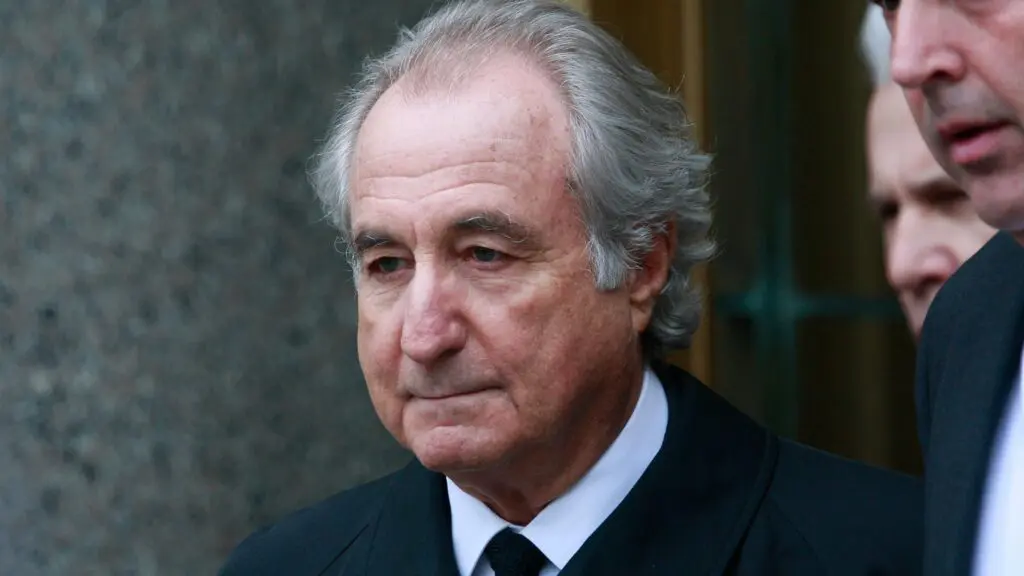Who is Bernie Madoff and what exactly did he do? We delve into the man behind one of the largest Ponzi schemes in US history.
Bernie Madoff is one of the textbook examples of Wall Street corruption and has fallen from grace of the rich, respected businessman to the poor and hated fraudster. He is responsible for thousands of people losing their money and, in many cases, their livelihoods.
The story of his rise isn’t as well known as his fall. However, growing up in Queens, New York, during the Second World War and starting his career in 1960, he traded honestly during the first years, but Madoff would fall victim to the greed common on Wall Street and begin to defraud his investors.
Nearly two years after his death, Netflix is releasing a documentary showcasing Madoff’s rise and fall. It’s important to go over just what Madoff did and how he eventually got caught.
Who is Bernie Madoff?
Bernard Lawrence Madoff, otherwise known as Bernie Madoff, was born in 1938 on April 29, and was the mastermind of the largest Ponzi schemes in US history. He is a disgraced businessman and former chairperson of the NASDAQ stock exchange, and at the time of his death, was serving a 150-year prison sentence.
Madoff started his Wall Street career in 1960 as a trader in penny stock at his own trading firm called Bernard L. Madoff Investment Securities LLC, of which he was chairman until his arrest. He grew his business with the help of his father-in-law, Saul Alpern, who was an accountant.
The SEC (US Securities and Exchange Commission) investigated the company on and off starting in 1992 but didn’t catch on to the fraud, something that has made many people angry, as it was said that they could have prevented some of the damage caused.
Bernie Madoff died aged 82 at the Federal Medical Center, a prison for inmates with health needs, in Butner, North Carolina, from natural causes in 2021.
What exactly did Bernie Madoff do?
Bernie Madoff led the hugest Ponzi scheme in US history. A Ponzi scheme is a form of fraud that lures investors and pays profits to earlier investors with funds from more recent investors. He lied to duped clients about managing more money than he was and gave customers fake account statements showing returns of up to $50 billion dollars, but in reality, no trading had actually taken place.
This scheme is thought to have run for several decades, with Madoff himself saying that he started it in the 1990s, but federal investigators believe it started as early as the mid-1980s and possibly even the late 1970s.
How much money did Bernie Madoff lose?
Over the decades-long Ponzi scheme, there have been as much as $20 billion in cash losses and $65 billion in paper losses. Paper losses refer to unrealized profits or losses that only become real profits or losses. According to The Guardian, the scheme resulted in a loss of at least $17.5 billion dollars in thousands of people’s savings.
Some notable celebrities that got caught up in the fraud are movie director Steven Spielberg and actor Kevin Bacon. During an appearance on the SmartLess podcast, Bacon opened up about the damage the fraud did to his family, saying, “there are obvious life lessons there. You know, if something is too good to be true, it’s too good to be true. And when something like that happens, you know, you look at each other, then you go, ‘Well, that sucks. Let’s, roll up our sleeves and get to work,’ you know?”
The Madoff Victim Fund, set up in 2013 to assist the over 40,000 victims, has given over $4 billion in financial assistance.
What was Bernie Madoff’s net worth at death?
At the time of his death in April 2021, Bernie Madoff’s net worth was around minus $17 billion dollars. People who have a negative net worth have liabilities (legal debt that is owed) that are more than their assets are worth. In Madoff’s case, this is because he was ordered to pay $170 billion in restitution (money that the court orders to repay victims for financial loss).
The judge that sentenced Bernie Madoff stripped him of all his personal property, including real estate and investments. This would have contributed to the collapse of Madoff’s net worth, which in December 2008 stood at $64.8 billion.
CNBC reported that Madoff earned a total of $710 in prison, after completing almost 3,000 hours of prison work. Madoff was paid only roughly 24 cents per hour.
Who turned Bernie Madoff in?
When investors began to get worried about the impending financial crisis and started to ask for their money back, things unraveled for Bernie Madoff. In early December 2008, investors asked for redemption payments totaling $7 billion. Usually, when investors asked for these payments, Madoff would deposit money from investors into his business account and withdraw the money requested.
The issue with this payment, however, is that Madoff only had $234 million in his account, not enough to pay investors. According to FBI reports, once Madoff realized he couldn’t pay off what he owed, he confessed to his sons, Mark and Andrew, and brother Peter about the Ponzi scheme saying everything was “one big lie.” Madoff’s sons would turn him in, with the FBI raiding his home while Madoff was in his bathrobe.
Madoff would later plead guilty to securities fraud and several other charges. He would have to serve 150 years in prison and pay $170 billion dollars in restitution. He died in prison, having served 12 years of his sentence.
Is there a Netflix documentary on Bernie Madoff?
On January 4, 2023, Netflix will be releasing a four-part documentary series on the rise and fall of Bernie Madoff called Madoff: The Monster of Wall Street. Directed by Joe Berlinger, it stars Joseph Scotto as the titular Madoff, Ginger O’Toole as his wife, Ruth Madoff, Cris Colicchio as brother Peter Madoff and Kevin Delano and Alex Olson as sons Andrew and Mark Madoff, respectively.
The trailer for the documentary says people think they know the story and think it’s only about one man, but it claims that you can’t run a $50 billion Ponzi scheme and not have everyone know about it.
Reviews are already out for it, with it being called extraordinary by Ready Steady Cut and one from Fiction Horizon, saying that while the execution is boring, there is an interesting story to justify its existence.




